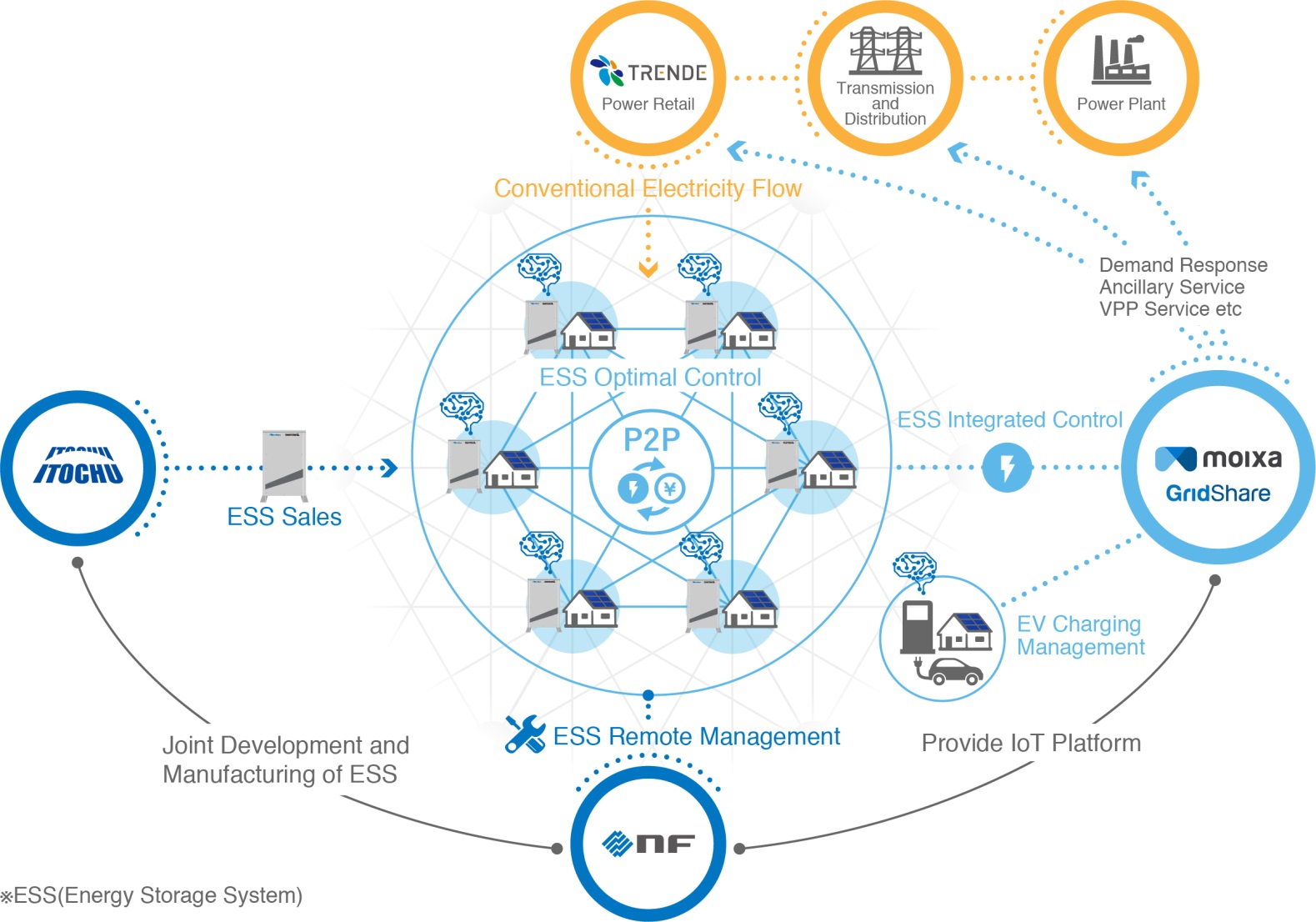ITOCHU Announces Launch of Next-Generation Energy Storage System That Utilizes AI Technology
For building a distributed energy society
October 24, 2018
ITOCHU Corporation (headquartered in Minato-ku, Tokyo; Yoshihisa Suzuki, President & COO; hereinafter “ITOCHU”) announced today that it is to launch sales of a next-generation energy storage system that utilizes AI technology, together with a dedicated electricity supply plan tailored specifically to energy storage cells. ITOCHU is launching these solutions in partnership with UK company Moixa Energy Holdings Ltd. (hereafter “Moixa”), NF Corporation (hereafter “NF”) and TRENDE Inc. (hereafter “TRENDE”).
In recent times, Japan has seen a continuous string of natural disasters in areas across the country, including torrential rain and earthquakes resulting in the occurrence of widespread power outages. Attention is therefore gathering around household power supply measures for use in such times of disaster. ITOCHU has been focusing on the market of energy storage systems, a core system for distributed energy, since the early days of the market. The company entered the business of energy storage systems for general households in 2013. ITOCHU has developed and commercialized the Smart Star L, its own-brand energy storage system, jointly with NF. As of October 2018, cumulative total sales of Smart Start L stand at approximately 10,000 units (equivalent to 95MWh/30MW).
In Japan, the period for the solar power generation fixed-price feed-in-tariff (hereafter “FIT”) scheme, which began in 2009, will begin to expire as of October 2019. This is expected to lead to an increase in self-consumption (i.e. home use) of electric power generated using photovoltaic solar power generation systems. At the same time, after the expiry of the FIT scheme period, it will become necessary to consider a range of variable factors, including climatic conditions which fluctuate on a daily basis, and the state of actual solar power generation and power consumption at each household. Energy storage systems will therefore require more complex and sophisticated control mechanisms.
In January 2018, ITOCHU acquired exclusive marketing rights in Japan from Moixa for its GridShare Client AI software. The adaptation of the GridShare Client software to Japanese domestic specifications is now completed, and ITOCHU will launch sales of a next-generation energy storage system integrating Smart Star L and GridShare as of November 2018. In addition to the existing features of Smart Star L which enable it to perform strongly during power outages, the new system also enables efficient operation of solar power generation and energy storage systems by utilizing an AI which analyzes and learns from meteorological data, forecasts of user demand for electric power, power generation and other data interconnecting with the IoT remote control system operated by NF, thereby enabling optimal control over charging and discharging of energy storage systems. Moreover, utilizing the aidenki (*1) plan (a dedicated time-frame specific electric power plan scheduled for release by TRENDE, tailored specifically to next-generation energy storage systems) will facilitate proposals that will enable users to more fully appreciate the benefits of introducing energy storage systems.
In the future, ITOCHU will seek to develop diverse business operations based on the GridShare platform, including Virtual Power Plant (*2) businesses, electric vehicle (EV) charging management, energy services aimed at power transmission and distribution business operators and power generation (i.e. power plant) business operators, and peer-to-peer (P2P) energy transactions between general consumers to contribute the creation of a distributed energy society.
- *1aidenki: For details, please refer to the following website. https://idenki.jp
- *2Virtual Power Plant: An electricity business model for the future generation, in which distributed energy sources, such as scattered storage cells and electric vehicles, are controlled in an integrated manner as if they were a single power plant (virtual power plant), according to power grid supply and demand.
Future business development through the GridShare platform (image)
|
|

